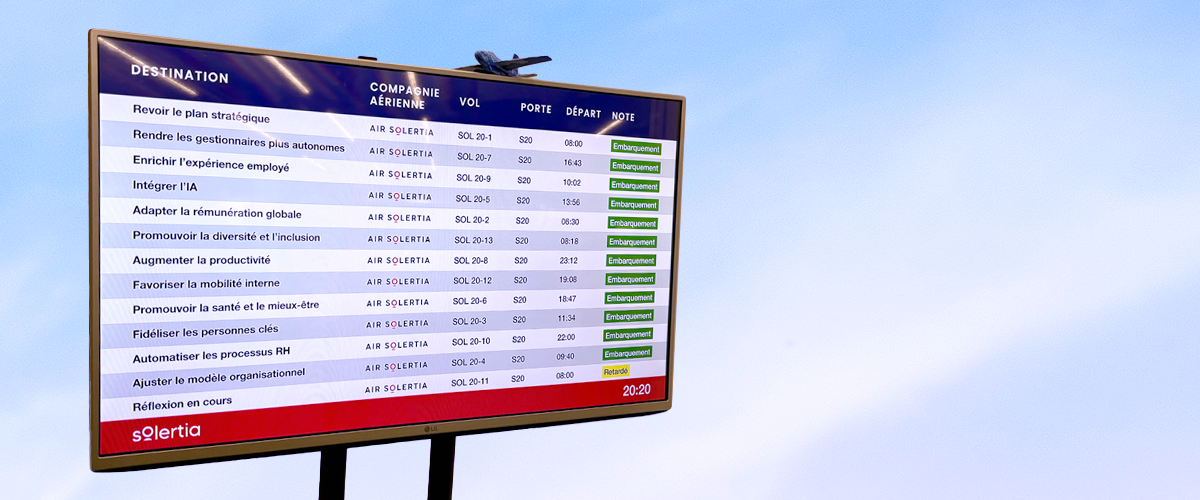
In 2020, the pandemic drove many employees to work from home, meaning that this year’s in-person performance evaluations will take on a unique digital twist.
As remote work becomes the norm for many companies, it remains important that we stay connected to our team members, despite geographical distance. Given these conditions, how should we evaluate our employees?
An Increase in Productivity
According to a study conducted by ADP, 64% of Quebeckers believe that there has been no change in their opportunities for a promotion or career advancement. Their impressions are more optimistic than the average for the rest of Canada (45%). Another study conducted by IWG reveals that 85% of companies report that productivity has increased “due to the flexibility gained” from working remotely. The University of Stanford has also published a study indicating that telecommuting has led to a 13% rise in performance. On average, employees who work at an office tend to spend 66 minutes per day discussing topics unrelated to work, compared to 29 minutes for their colleagues who work from home.
What should we do in this complex situation? To what extent should we consider the impact of COVID-19 during our evaluations? And how can we guarantee equality and fairness, given the varying realities faced by each person?
Performance Evaluation Goals
As the public health crisis continues, it is essential to strengthen company culture and articulate your post-pandemic goals. Your employees are likely to have experienced drastic changes in their work circumstances; some people may be struggling to juggle work calls with entertaining young children or caring for elderly parents, while others may be feeling overwhelmed by a sense of isolation. The present context requires a flexible approach. Over the past several months, companies have witnessed how technology has taken on an increasingly greater role in their communication methods.
There are several strategies that can help employers conduct a more empathetic evaluation that considers the situation of their employees.
Bringing More Compassion into Your Evaluations
Performance evaluations provide a measure of success based on goals that were, for the most part, set prior to the COVID-19 crisis. For this reason, rather than focusing on transactional metrics of performance, it may be more appropriate to emphasize empathy, resilience and the employee’s capacity to adapt during this difficult period. Teamwork and cooperation are essential in the face of a crisis, and we need to recognize and reward these skills.
The circumstances of your employees will vary. As a manager, it can be hard to clearly see, understand and evaluate each individual situation. In light of the psychological impact of COVID-19, it’s a good time to show more latitude and compassion.
This year, a number of schools cancelled grades in favour of a pass/fail model. In a similar vein, workplaces may benefit from a system that acknowledges pandemic-related challenges and offers a more narrative evaluation. This could provide employees with targeted and useful information on where they succeeded and where they could strive to improve.
Beware of Biases
It’s likely that as a manager you won’t have access to as much information as usual. This means there’s a risk of being influenced by judgments stemming from preconceived prejudices. To resolve this problem, you need to be aware of your biases and obtain other sources of feedback such as self and peer evaluations.
You also want to highlight the achievements, commitment and teamwork of your highest performing employees. In addition to boosting their morale, this will increase the chances they will stay with your company.
Praising and congratulating your employees has a significant impact on their peace of mind and productivity. Amidst this economy where some people fear losing their jobs, it is crucial to instill a sense of security.
Videoconference Evaluations
Though Zoom fatigue is real, videoconferencing remains an important tool. It is crucial to maintaining the quality of your communications and by extension, your company relationships. To make the most of this medium, do your best to be open, warm, clear and more verbal than usual. Non-verbal communication is also significant, so pay close attention to your own body language, as well as your employees’. Contextual clues are less obvious, which can lead to misunderstandings.
And of course, make sure you’ve properly set up all your technical elements (microphone, camera, Internet connection). Your usual best practices for preparation remain the same. Evaluation meetings should follow a similar order of business: review of the past year, successes and challenges, a look at the year to come, and conclusion. With the development of the HRIS, some companies may take advantage of the performance evaluation function of the software. Beforehand, you will need to inform your employee how you’re going to conduct the meeting and what they need to know about your medium of choice.
Telecommuting is highly likely to become the new normal. It’s a good time to rethink performance evaluations. Perhaps they could become more frequent (semi-annually or quarterly) and less in-depth. This would make feedback and adjustments more consistent and accessible.
Our current situation could act as a catalyst for change in company performance culture, offering an opportunity to pivot toward a people-centred management system that is built on resilience and agility, rather that efficiency and competition.
https://www.airtasker.com/blog/the-benefits-of-working-from-home/
https://www.iwgplc.com/global-workspace-survey-2019
https://www.adpri.org/research/the-workforce-view-2020-post-covid-19/
https://www.wrike.com/fr/blog/17-statistiques-etonnantes-a-propos-du-teletravail/
https://www.lapresse.ca/affaires/2020-09-02/les-quebecois-desormais-mordus-du-teletravail.php
https://hbr.org/2020/06/how-to-do-performance-reviews-remotely
https://talentculture.com/online-performance-review-remote-employee/
https://www.impraise.com/blog/how-to-run-a-practical-performance-review-for-remote-employees
Partager


